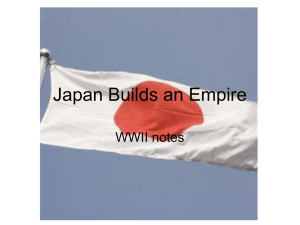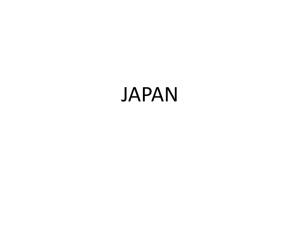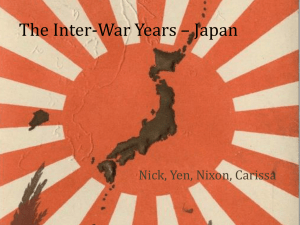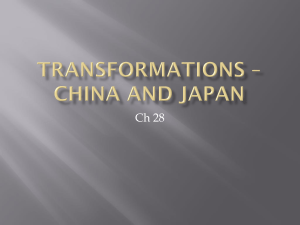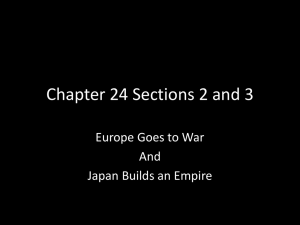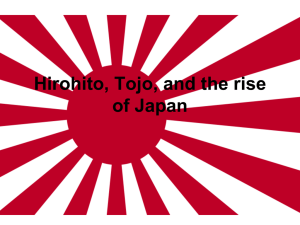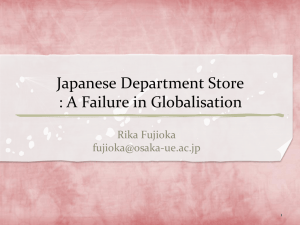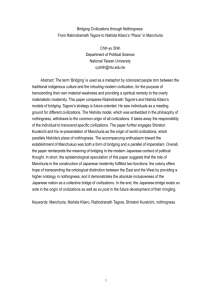Manchukuo: Colonony or Nation
advertisement
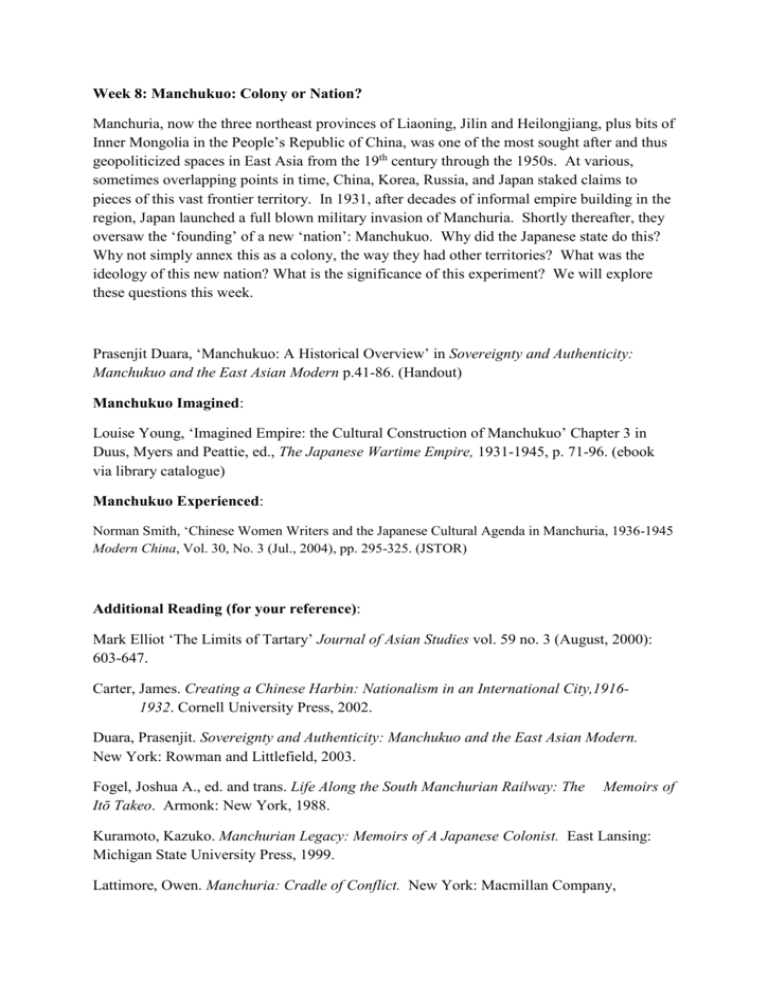
Week 8: Manchukuo: Colony or Nation? Manchuria, now the three northeast provinces of Liaoning, Jilin and Heilongjiang, plus bits of Inner Mongolia in the People’s Republic of China, was one of the most sought after and thus geopoliticized spaces in East Asia from the 19th century through the 1950s. At various, sometimes overlapping points in time, China, Korea, Russia, and Japan staked claims to pieces of this vast frontier territory. In 1931, after decades of informal empire building in the region, Japan launched a full blown military invasion of Manchuria. Shortly thereafter, they oversaw the ‘founding’ of a new ‘nation’: Manchukuo. Why did the Japanese state do this? Why not simply annex this as a colony, the way they had other territories? What was the ideology of this new nation? What is the significance of this experiment? We will explore these questions this week. Prasenjit Duara, ‘Manchukuo: A Historical Overview’ in Sovereignty and Authenticity: Manchukuo and the East Asian Modern p.41-86. (Handout) Manchukuo Imagined: Louise Young, ‘Imagined Empire: the Cultural Construction of Manchukuo’ Chapter 3 in Duus, Myers and Peattie, ed., The Japanese Wartime Empire, 1931-1945, p. 71-96. (ebook via library catalogue) Manchukuo Experienced: Norman Smith, ‘Chinese Women Writers and the Japanese Cultural Agenda in Manchuria, 1936-1945 Modern China, Vol. 30, No. 3 (Jul., 2004), pp. 295-325. (JSTOR) Additional Reading (for your reference): Mark Elliot ‘The Limits of Tartary’ Journal of Asian Studies vol. 59 no. 3 (August, 2000): 603-647. Carter, James. Creating a Chinese Harbin: Nationalism in an International City,19161932. Cornell University Press, 2002. Duara, Prasenjit. Sovereignty and Authenticity: Manchukuo and the East Asian Modern. New York: Rowman and Littlefield, 2003. Fogel, Joshua A., ed. and trans. Life Along the South Manchurian Railway: The Itō Takeo. Armonk: New York, 1988. Memoirs of Kuramoto, Kazuko. Manchurian Legacy: Memoirs of A Japanese Colonist. East Lansing: Michigan State University Press, 1999. Lattimore, Owen. Manchuria: Cradle of Conflict. New York: Macmillan Company, 1935. Lee, Chong-Sik. Revolutionary Struggle in Manchuria. Berkeley: University of California Press, 1983. Levine, Steven I. Anvil of Victory: The Communist Revolution in Manchuria, 19451948. New York: Columbia University Press, 1987. 1949. Matsusaka, Yoshihisa Tak. The Making of Japanese Manchuria, 1904-1932. Cambridge: Harvard University Asia Center, 2001. Mitter, Rana. The Manchurian Myth: Nationalism, Resistance, and Collaboration in Modern China. Berkeley: University of California Press, 2000. Hyun Ok Park, Two Dreams in One Bed: Empire, Social Life, and the Origins of the North Korean Revolution in Manchuria (Duke, 2005) Tamanoi, Mariko Asano, ed. Crossed Histories: Manchuria in the Age of Empire. Honolulu: University of Hawai’i Press, 2005. Tucker, David. “Labor Policy and the Construction Industry in Manchukuo: Systems of Recruitment, Management, and Control” in Kratoska, Paul H., ed. Asian Labor in the Wartime Japanese Empire: Unknown Histories. Armonk: M.E. Sharpe, 2005, 2557. ______. “Learning from Dairen, Learning from Shinkyō: Japanese Colonial City Planning and Postwar Reconstruction” in Hein, Carola, Jeffrey M. Diefendorf and Ishida Yurifusa, ed. Rebuilding Urban Japan after 1945. New York: Palgrave, 2003. ______. “City Planning without Cities: Order and Chaos in Utopian Manchukuo” in Tamanoi, Mariko Asano, ed. Crossed Histories: Manchuria in the Age of Empire. Honolulu: University of Hawai’i Press, 2005, 53-81. Louise Young, Japan’s Total Empire: Manchuria and the Culture of Wartime Imperialism (California, 1998)
